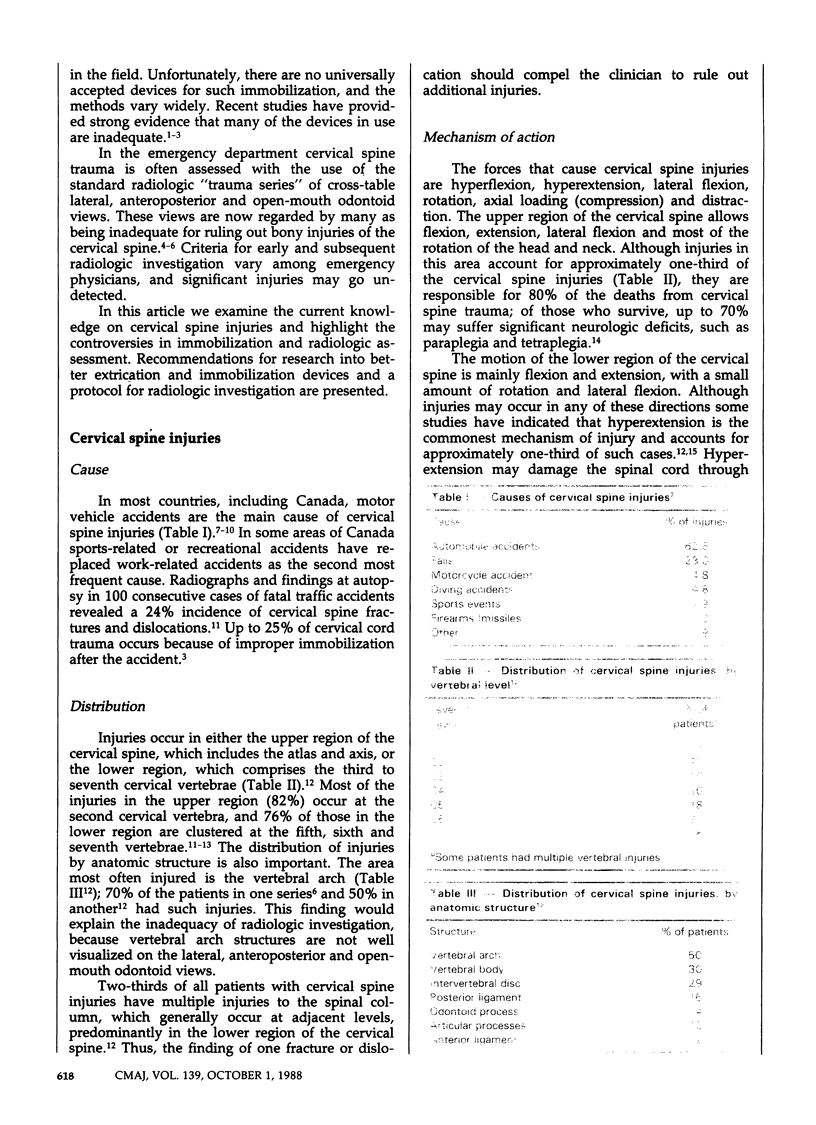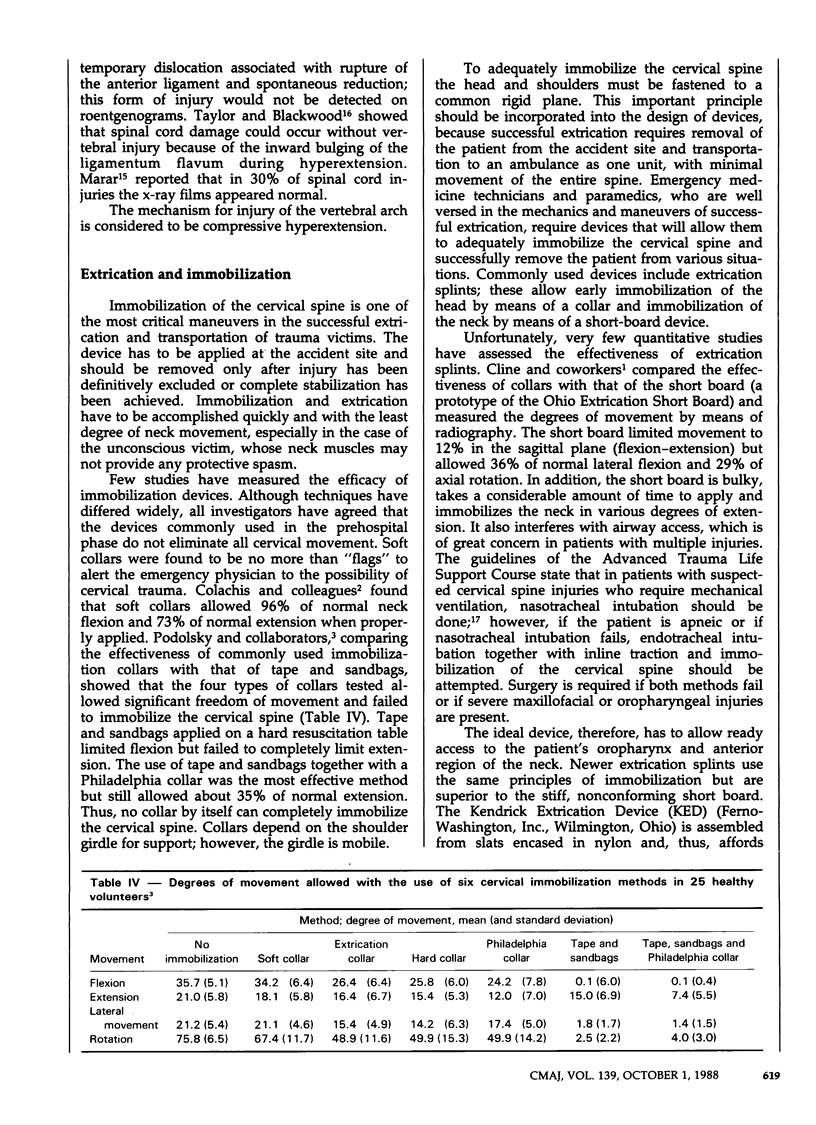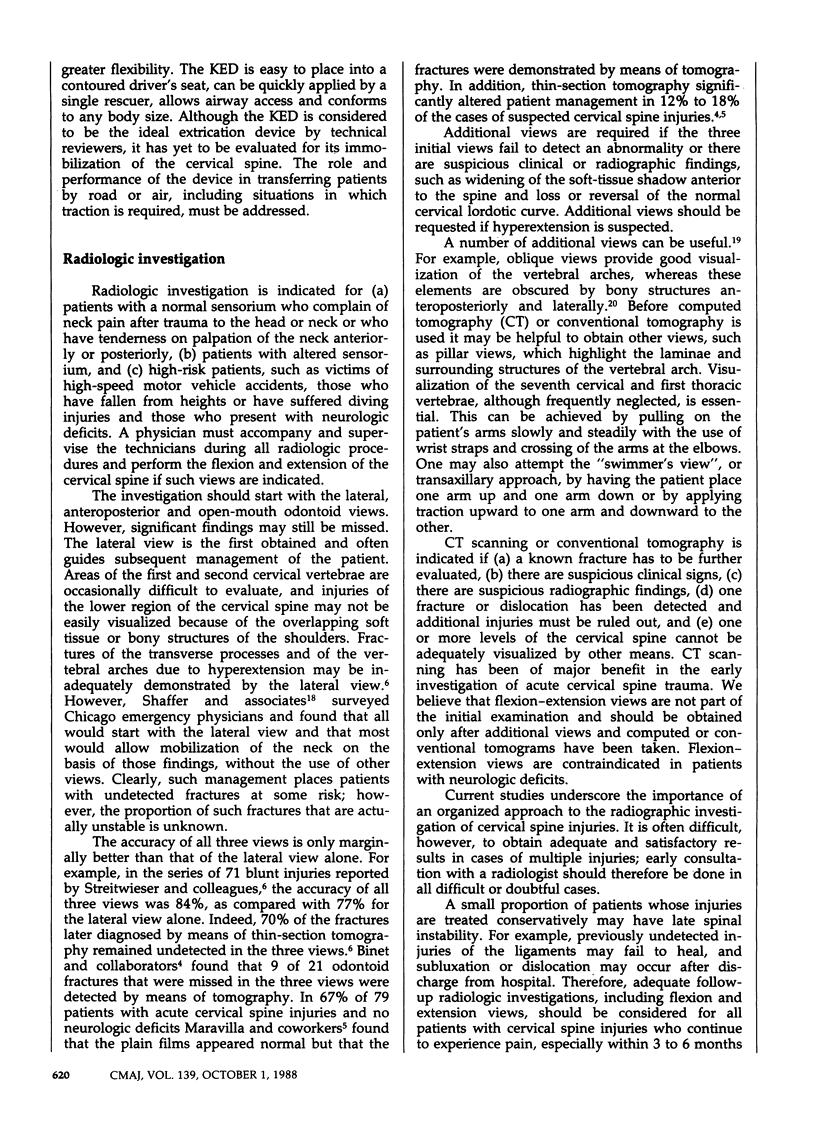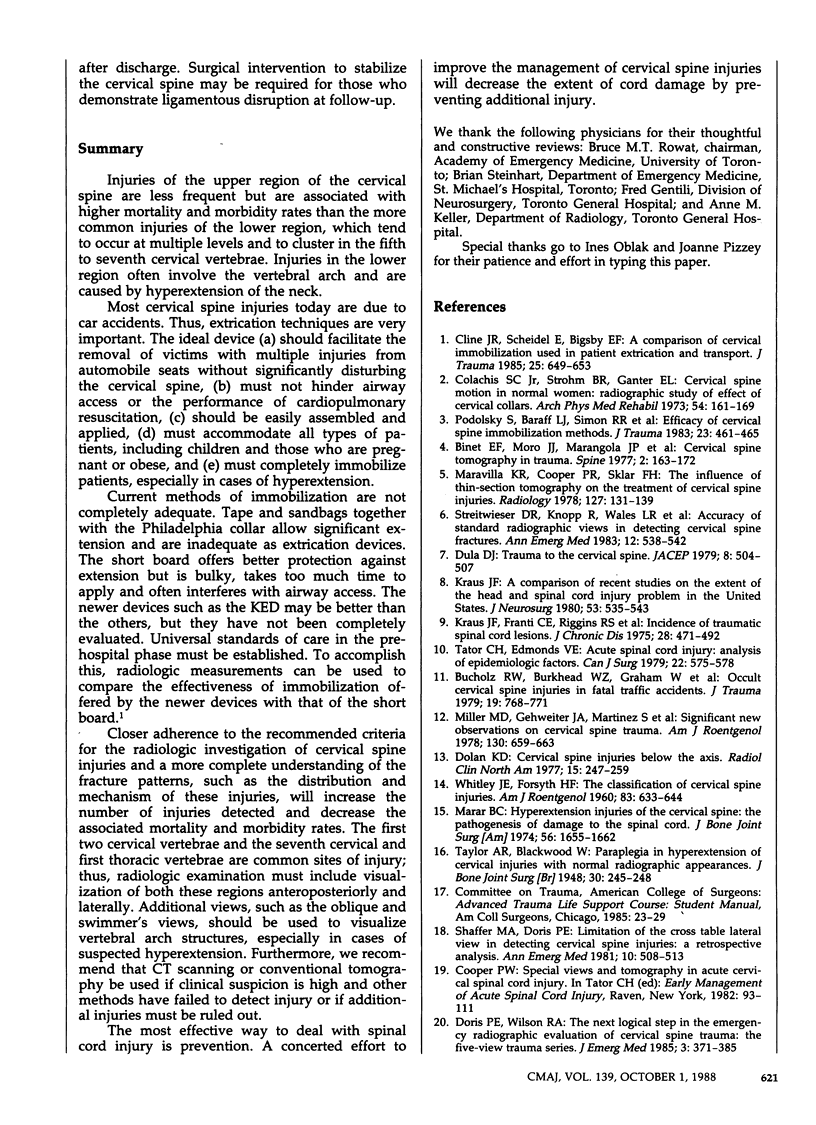Abstract
Most cervical spine injuries are due to motor vehicle accidents. Proper extrication of the victims is vital; the ideal device should be easily assembled and applied, should facilitate removal of victims from automobile seats without changing the body's position, must not hinder airway access or the performance of cardiopulmonary resuscitation, must accommodate all types of patients, including children and obese or pregnant patients, and must completely immobilize the patient, especially if hyperextension is suspected. Current methods of immobilization, such as the use of a soft collar and sandbags, allow neck extension; the short board protects against extension but interferes with airway access. Newer devices are discussed in this article. Injuries of the upper cervical spine are less common but more serious than those of the lower portion and usually involve the vertebral arch. Radiologic examination of the first and second cervical vertebrae and the seventh cervical and first thoracic vertebrae should be emphasized. If lateral and anteroposterior views do not reveal abnormal findings and injury is still suspected, oblique views and computed or conventional tomography should be used. Cervical spinal cord injuries can be minimized or prevented if proper early management is applied.
Full text
PDF




Selected References
These references are in PubMed. This may not be the complete list of references from this article.
- Bucholz R. W., Burkhead W. Z., Graham W., Petty C. Occult cervical spine injuries in fatal traffic accidents. J Trauma. 1979 Oct;19(10):768–771. doi: 10.1097/00005373-197910000-00009. [DOI] [PubMed] [Google Scholar]
- Cline J. R., Scheidel E., Bigsby E. F. A comparison of methods of cervical immobilization used in patient extrication and transport. J Trauma. 1985 Jul;25(7):649–653. doi: 10.1097/00005373-198507000-00013. [DOI] [PubMed] [Google Scholar]
- Colachis S. C., Jr, Strohm B. R., Ganter E. L. Cervical spine motion in normal women: radiographic study of effect of cervical collars. Arch Phys Med Rehabil. 1973 Apr;54(4):161–169. [PubMed] [Google Scholar]
- Dolan K. D. Cervical spine injuries below the axis. Radiol Clin North Am. 1977 Aug;15(2):247–259. [PubMed] [Google Scholar]
- Doris P. E., Wilson R. A. The next logical step in the emergency radiographic evaluation of cervical spine trauma: the five-view trauma series. J Emerg Med. 1985;3(5):371–385. doi: 10.1016/0736-4679(85)90322-1. [DOI] [PubMed] [Google Scholar]
- Dula D. J. Trauma to the cervical spine. JACEP. 1979 Dec;8(12):504–507. doi: 10.1016/s0361-1124(79)80295-6. [DOI] [PubMed] [Google Scholar]
- Kraus J. F., Franti C. E., Riggins R. S., Richards D., Borhani N. O. Incidence of traumatic spinal cord lesions. J Chronic Dis. 1975 Oct;28(9):471–492. doi: 10.1016/0021-9681(75)90057-0. [DOI] [PubMed] [Google Scholar]
- Marar B. C. Hyperextension injuries of the cervical spine. The pathogenesis of damage to the spinal cord. J Bone Joint Surg Am. 1974 Dec;56(8):1655–1662. [PubMed] [Google Scholar]
- Maravilla K. R., Cooper P. R., Sklar F. H. The influence of thin-section tomography on the treatment of cervical spine injuries. Radiology. 1978 Apr;127(1):131–139. doi: 10.1148/127.1.131. [DOI] [PubMed] [Google Scholar]
- Miller M. D., Gehweiler J. A., Martinez S., Charlton O. P., Daffner R. H. Significant new observations on cervical spine trauma. AJR Am J Roentgenol. 1978 Apr;130(4):659–663. doi: 10.2214/ajr.130.4.659. [DOI] [PubMed] [Google Scholar]
- Podolsky S., Baraff L. J., Simon R. R., Hoffman J. R., Larmon B., Ablon W. Efficacy of cervical spine immobilization methods. J Trauma. 1983 Jun;23(6):461–465. doi: 10.1097/00005373-198306000-00003. [DOI] [PubMed] [Google Scholar]
- Shaffer M. A., Doris P. E. Limitation of the cross table lateral view in detecting cervical spine injuries: a retrospective analysis. Ann Emerg Med. 1981 Oct;10(10):508–513. doi: 10.1016/s0196-0644(81)80004-2. [DOI] [PubMed] [Google Scholar]
- Streitwieser D. R., Knopp R., Wales L. R., Williams J. L., Tonnemacher K. Accuracy of standard radiographic views in detecting cervical spine fractures. Ann Emerg Med. 1983 Sep;12(9):538–542. doi: 10.1016/s0196-0644(83)80293-5. [DOI] [PubMed] [Google Scholar]
- Tator C. H., Edmonds V. E. Acute spinal cord injury: analysis of epidemiologic factors. Can J Surg. 1979 Nov;22(6):575–578. [PubMed] [Google Scholar]
- WHITLEY J. E., FORSYTH H. F. The classification of cervical spine injuries. Am J Roentgenol Radium Ther Nucl Med. 1960 Apr;83:633–644. [PubMed] [Google Scholar]


